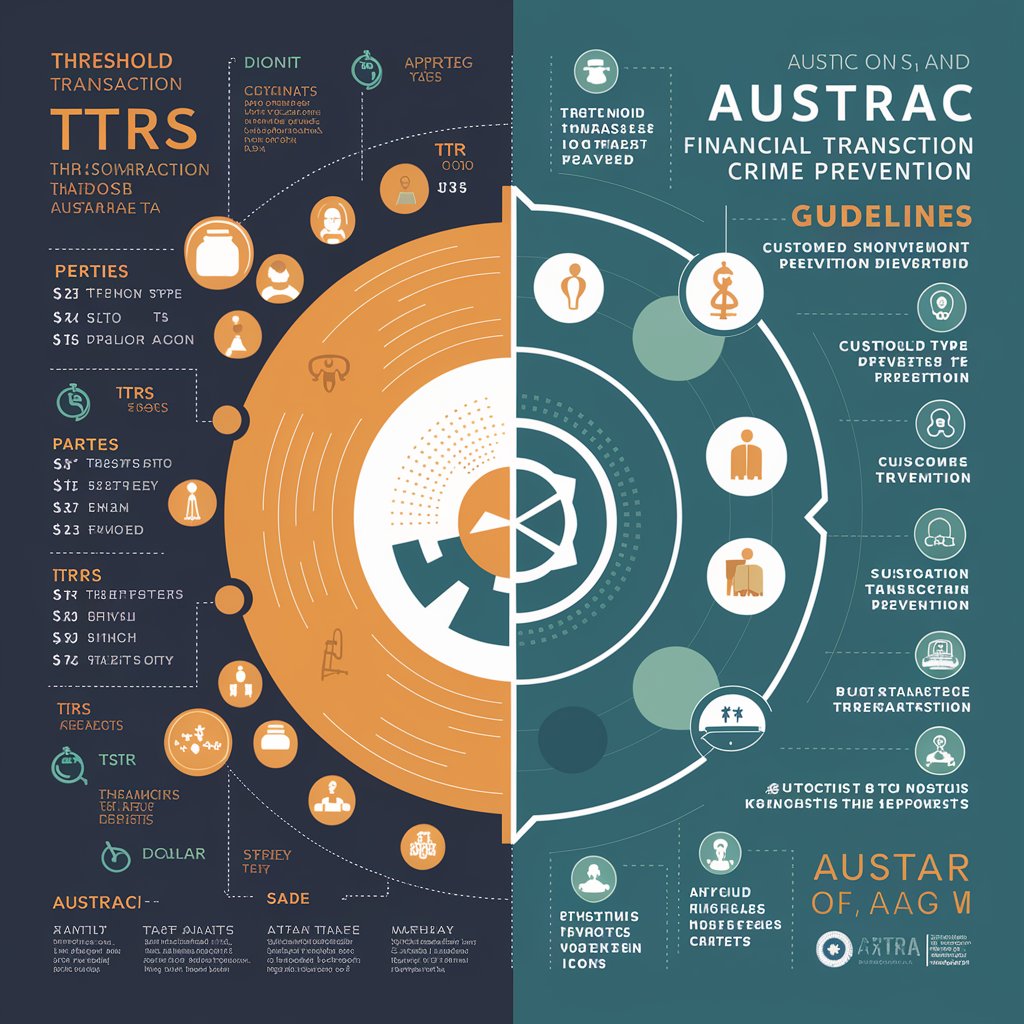Building Financial Crime rules - Rule number 003
- Home
- Resources

AUSTRAC has updated its guidance position on the reporting of threshold transaction reports (TTRs) when a customer conducts multiple cash transactions.
What is This Act All About?
AUSTRAC, Australia’s financial intelligence agency, plays a crucial role in protecting the country from financial crime. One of its responsibilities is to oversee the reporting of large cash transactions through Threshold Transaction Reports (TTRs). The law requires financial institutions to report any cash transactions of AUD 10,000 or more. Recently, AUSTRAC updated its guidance on how these TTRs should be handled when a customer conducts multiple cash transactions that cumulatively meet or exceed the AUD 10,000 threshold.
The update aims to close loopholes that criminals might exploit to avoid detection by splitting large cash transactions into smaller amounts that individually fall below the reporting threshold but collectively exceed it. This practice, known as “structuring,” is a common method used to launder money. AUSTRAC’s updated guidance ensures that financial institutions identify and report such activities to prevent financial crime effectively.
Implementing this rule for a financial institution: What will this rule consist of?
To comply with AUSTRAC’s updated guidance, financial institutions must implement a fraud rule that identifies and reports multiple cash transactions that collectively exceed the AUD 10,000 threshold. This rule must be robust enough to capture structuring activities while minimizing false positives that could burden investigative teams.
Key Components of the Rule:
- Transaction Aggregation:
- Definition: This involves aggregating all cash transactions made by a customer within a specified period (e.g., within 24 hours or across multiple days) to determine if the cumulative amount meets or exceeds the AUD 10,000 threshold.
- Implementation: The rule should monitor all cash transactions by an individual customer or by an organisation and trigger an alert when the combined amount reaches AUD 10,000, even if the transactions are spread across different branches or accounts.
2. Customer Profiling:
- Definition: Creating profiles based on customer behaviour patterns to identify deviations that may indicate suspicious activity.
- Implementation: If a customer who typically conducts small cash transactions suddenly begins making multiple large cash deposits, the rule should flag this behaviour as suspicious.
3. Temporal Analysis:
- Definition: Analysing the timing of transactions to detect structuring activities.
- Implementation: The rule should look for patterns where a customer makes several transactions just below the threshold in quick succession or within a short time frame (e.g., over a few days).
4. Geolocation Monitoring:
- Definition: Tracking the locations where the transactions occur to detect attempts to spread transactions across different branches to avoid detection.
- Implementation: If a customer makes multiple cash deposits at different branches on the same day, the rule should flag these transactions for further investigation.
Features/Signals including derived ones required to build this rule
- Transaction Amount:
- Definition: The amount of each individual cash transaction.
- Usage: Track all cash transactions and aggregate them for each customer within a specific time frame to detect when the cumulative amount reaches or exceeds AUD 10,000.
2. Transaction Date and Time:
- Definition: The specific date and time when each transaction is made.
- Usage: Use this information to identify patterns of structuring, such as multiple transactions just below the threshold within a short period.
3. Customer ID:
- Definition: The unique identifier for each customer.
- Usage: Aggregate transactions by customer ID to monitor cumulative cash deposits or withdrawals.
4. Branch ID/Location:
- Definition: The branch or ATM where the transaction occurred.
- Usage: Detect structuring attempts that involve spreading transactions across multiple branches.
5. Transaction Frequency:
- Definition: The number of transactions a customer makes within a specific period.
- Usage: High-frequency transactions just below the threshold might indicate an attempt to structure transactions to avoid detection.
6. Unusual Transaction Patterns:
- Definition: A deviation from the customer’s normal transaction behaviour.
- Usage: If a customer suddenly starts making large cash deposits or withdrawals that are not consistent with their usual activity, this should trigger an alert.
7. Behavioural Anomalies:
- Definition: Actions that deviate from normal customer behaviour, such as visiting multiple branches in a short time.
- Usage: Use algorithms to detect when a customer visits several branches to conduct transactions that individually fall below the threshold but collectively exceed it.
Additional Features to Ensure Compliance
- Real-Time Monitoring:
- The system should be capable of monitoring transactions in real-time to detect and report suspicious activity as it happens.
- Alert Prioritization:
- Implement a system to prioritize alerts based on the severity of the detected suspicious activity, ensuring that the most critical cases are investigated promptly.
- Regular Rule Updates:
- The fraud rule should be regularly reviewed and updated to adapt to new methods of structuring and other financial crime tactics.
Examples of How This Rule Might Work in Practice
- Sample scenario 1: A customer deposits AUD 9,000 in cash at one branch and later the same day deposits another AUD 2,000 at a different branch. The rule aggregates these transactions and triggers an alert because the total exceeds AUD 10,000.
- Sample scenario 2: A customer typically deposits small amounts but suddenly makes several AUD 9,500 deposits over several days. Although each deposit is below the threshold, the temporal analysis detects the pattern, triggering an alert for potential structuring.
Conclusion
Implementing a fraud rule based on AUSTRAC’s updated guidance on TTRs is essential for Australian financial institutions to comply with regulatory requirements and protect against financial crime. By using transaction aggregation, customer profiling, temporal analysis, and other advanced techniques, banks can effectively detect and report suspicious activities that might otherwise go unnoticed. Regular updates and real-time monitoring will ensure that the system remains robust and capable of adapting to new threats in the evolving landscape of financial crime.
This proactive approach not only ensures compliance with AUSTRAC’s regulations but also enhances the bank’s overall ability to detect and prevent money laundering and other financial crimes.
